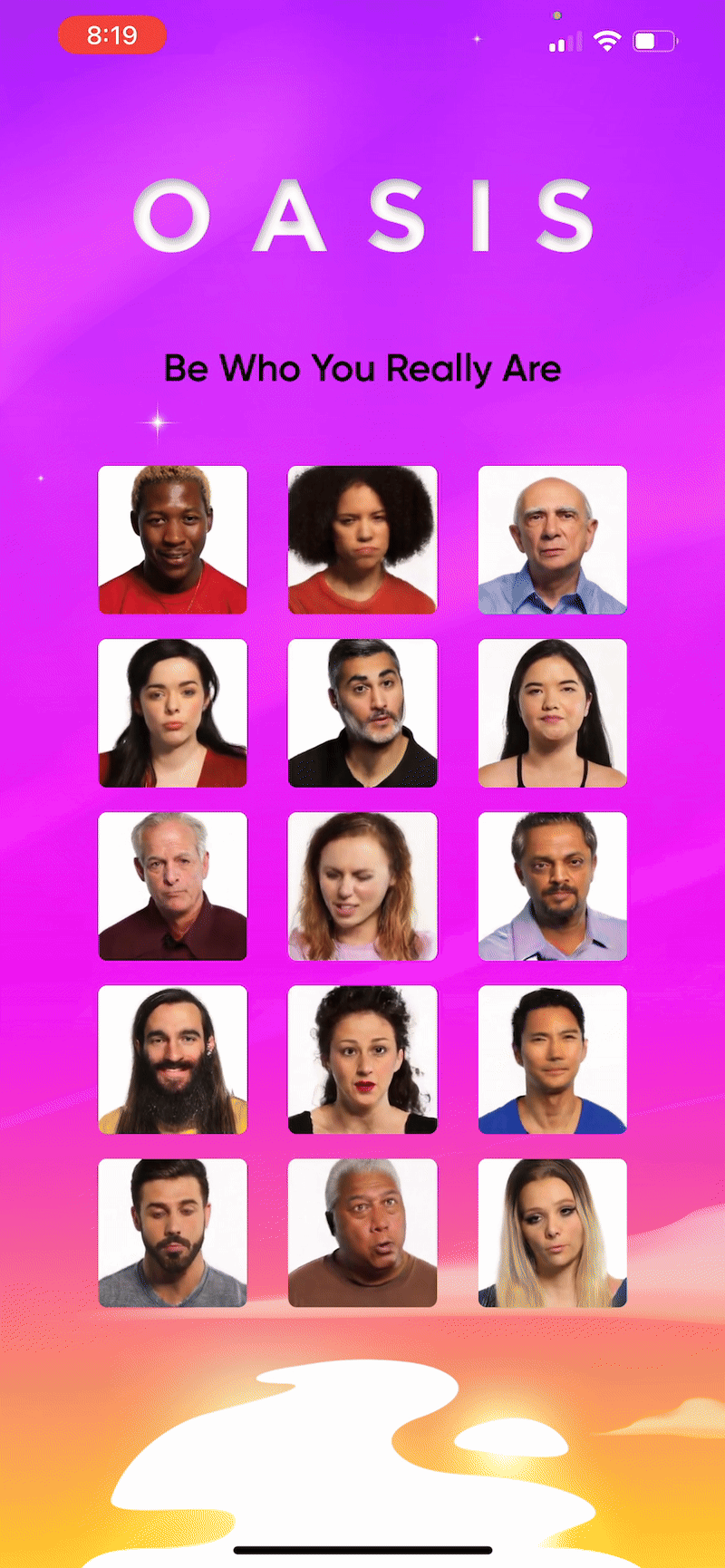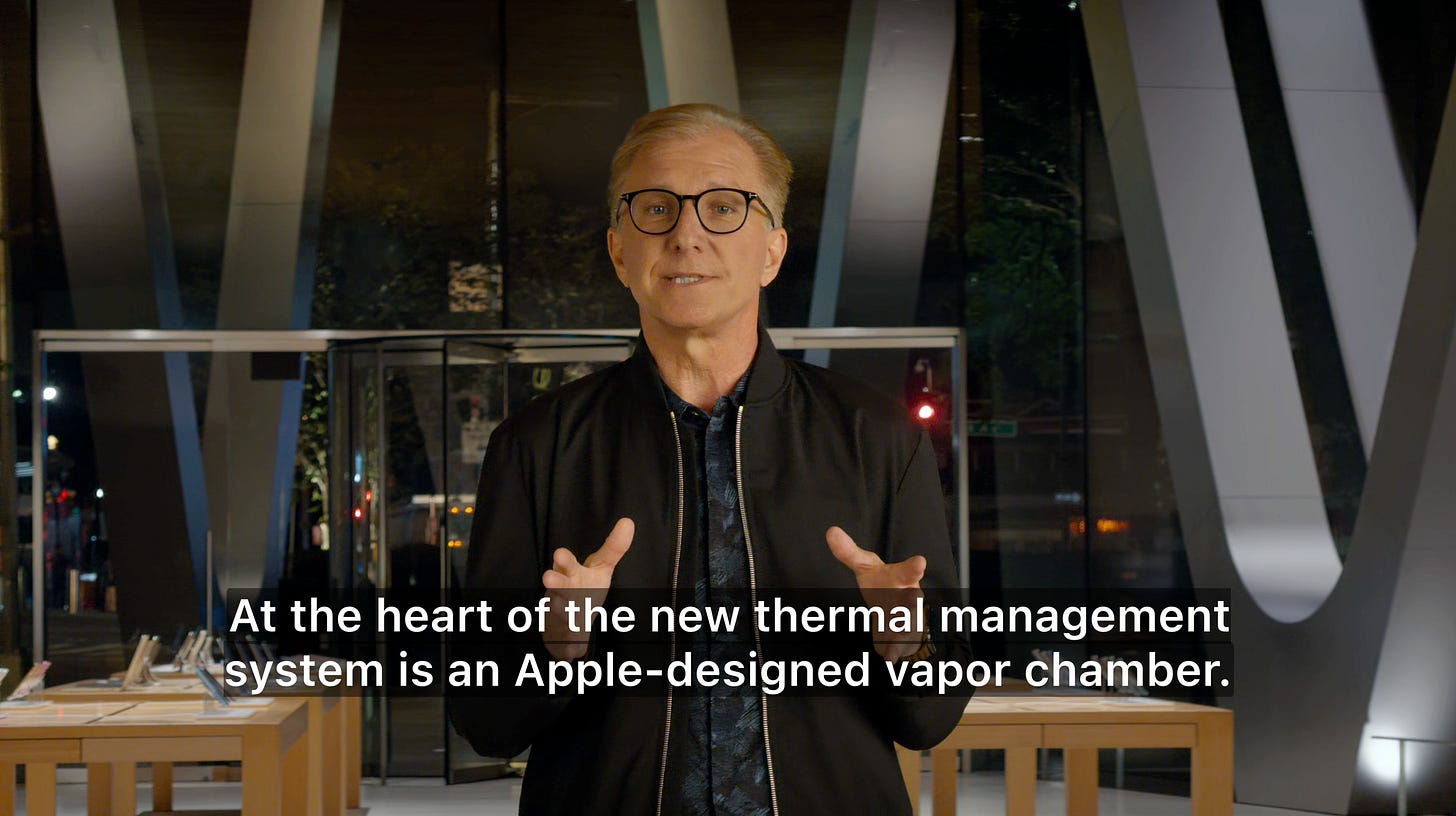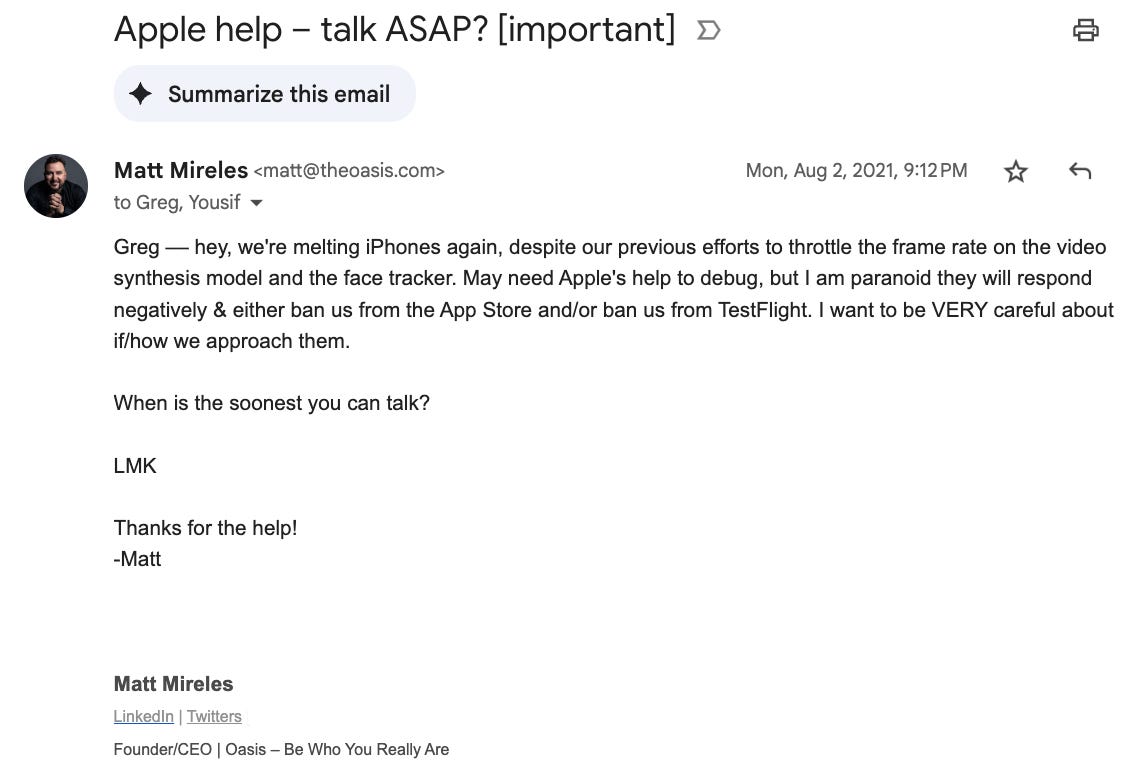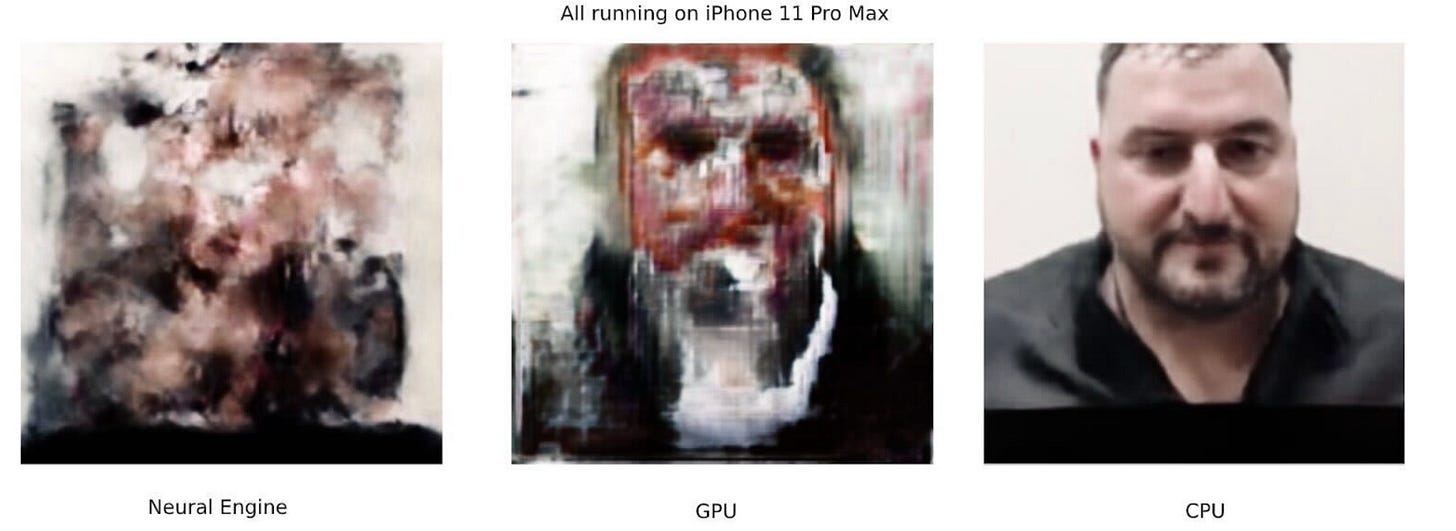We Melted iPhones for Science
OASIS generated video with local AI on iPhone. Four years later, Apple redesigned the iPhone so that AI won't burn your hand.
We meticulously manage power and surface temperature to ensure that iPhone 17 Pro always deliver exceptional performance while remaining comfortable to hold.
- Greg "Joz" Joswiathan, Senior Vice-President at Apple
I remember the panic.
The pitch meeting had started off so well. There I was – 3 minutes into a live OASIS demo – and Sam Altman, CEO of OpenAI, was already explaining his check size and pitching his investment philosophy to me.
Eight minutes in: "My phone is getting warm."
Thirteen minutes in: "It's burning my hand! It's burning my hand!"
His avatar froze. The call dropped. The investment evaporated.
Welcome to March 2021, when my startup OASIS was accidentally beta-testing the future of AI on Apple hardware that couldn't handle it.
Deepfake Video Chat on iPhone
OASIS wasn't just another video chat app. We built the first real-time AI video generation model for smartphones and bundled it with a patented low-bandwidth video chat protocol. Using GANs, we generated multiple photorealistic AI avatar video streams at 60fps in HD resolution. In real-time. On iPhone. In 2021.

The app was wild. And the performance metrics were insane:1
Clone yourself with 128 images + 10 minutes of cloud GPU training
Generate up to 15 unique AI video streams in real-time2 on the iPhone 11
512 x 512 pixel resolution per video
5 milliseconds latency per frame
Running entirely on Apple Neural Engine
This was March 2021. ChatGPT was 18 months away. Midjourney didn't exist yet.
We were so fucking early, we were living in the future.
The problem? The future was literally melting the present.
Three Dead iPhones
While I was pitching VCs, our QA guy was running a different kind of burn rate: three iPhones permanently disabled in three weeks. The phones would power on, but their cameras were dead. Black screens. We hypothesized that the heat from OASIS was melting the circuits connecting the camera to the silicon.
I was confident engineering would solve it. We just needed time.
Angel investors were throwing money at us anyway. Not random dentists—legitimate Silicon Valley royalty were writing $250K-500K checks at a $100M valuation.
Then I made a mistake. I told someone at Apple.
“Haven't We Banned You from the App Store?"
The conversation with an Apple PM friend did not go how I expected:
Me: explains the melting iPhone situation
Her: "So this was your company?"
Me: "Is. This IS my company."
Her: "Wait, haven't we banned you from the App Store? Why haven't we killed your company already?"
Me: "We... haven't exactly told anyone at Apple about this."
Her: "You're a mosquito. Apple will just stomp on you and you will not exist."
That's when the real panic set in.
The Secret Meeting That Never Happened
We needed help. Desperately.
Through an old friend’s frat connection, I arranged an off-the-books meeting with an engineer at Apple Silicon.
The engineer's opening line: "I don't want to know your names. I don't want to know anything about your company. Now explain the problem."
After an hour of technical discussion, he leaned back:
"Oh wow, that's an iOS bug. The iPhone should shut itself off before it melts, but we've never tested generating video constantly for 30 minutes straight on the Apple Neural Engine. Can you send me your software for our testing suite?"
My heart leapt. They'd help us!
"Unfortunately, you'll never hear from me again, but thanks for reporting this!"
And that was it. Radio silence. Until now.
The Real Problem Wasn't Our AI
Here's what took us months to figure out:
Our AI wasn't generating the heat. Apple's was.
We were using Apple's Vision framework for face tracking. When we disabled it, no thermal issues. When we enabled it, phones melted. The difference? Our AI ran on the Neural Engine (efficient, cool). Apple's face tracker ran on the GPU (power-hungry, hot).
The Neural Engine gave us a 20x speedup—5ms vs 200ms per frame. It barely generated heat. But we needed both systems running simultaneously, and the 2017-era Vision framework on GPU was like running a space heater inside your phone.
We'd discovered something Apple didn't know: their own systems couldn't coexist under sustained AI inference.
Every Time I Touch Apple Neural Engine, I Find Bugs
This wasn't our first rodeo with CoreML and ANE disasters:
Bug #1: CoreML turned our photorealistic avatars into digital noise unless we ran our AI model on the CPU. Two weeks of debugging Apple's software to ship a patch. See image below.
Bug #2: The melting phones.
Bug #3: CoreML turned our GPEN video enhancement filter into a horror show. We spent months debugging it to no avail. OASIS the product got stuck, OASIS the company became unfundable; bankruptcy loomed on the horizon. See image below.
Bug #4: CoreML crashes every time I try to run a surgically-modified version of the Kokoro text-to-speech model on the Neural Engine. See my GitHub repo from last month - 100+ commits of trying and failing. I filed a report with Apple on August 22nd, 2025.
Every. Single. Time.
The pattern is clear: Apple has built an incredibly powerful AI chip for an older generation of AI models and paired it with crappy software that makes it almost unusable to folks on the outside.
Fast Forward to 2025: Apple Fixes the Problem
On Tuesday, Apple announced the iPhone 17 Pro with the A19 Pro chip. The headline features:
New thermal management system
Vapor chamber cooling with deionized water
Neural accelerators integrated directly into GPU cores
Aluminum body replacing titanium for better heat dissipation
Read that again: Vapor. Chamber. Cooling.
Apple built a liquid cooling system for phones. Why? Because they finally admitted what we discovered in 2021: the iPhone architecture couldn't handle local AI applications.
It’s about time.
CoreML is Dead.
That Apple engineer who said they'd "never tested 30 minutes of continuous AI" wasn't lying.
The wizards of Cupertino built Apple Silicon for burst inference—Face ID, photo processing, Animoji. Quick hits. Not continuous generation. Not real-time video. Not Large Language Models. Not the future we were already building.
The Apple Neural Engine was designed for the convolutional neural nets of 2015, not the transformers of 2025. Fixed tensor shapes. Rigid operations. A Ferrari engine that only works in first gear.
Meanwhile, we were trying to run Le Mans.
Apple is not just fixing the melting problem.
Apple is rebuilding their entire AI hardware and software stack for the post-ChatGPT era.
CoreML was supposed to be the abstraction layer that made AI "just work" on Apple Silicon. Instead, it became the bottleneck that made nothing work. So Apple is doing what Apple does: pretending the old thing never existed while quietly building its replacement.
Now they're building MLX—a completely new framework that bypasses CoreML entirely—and pushing developers straight to Metal—their GPU programming language—for AI training and inference. This is real progress!
Apple just admitted—through hardware—that their entire AI strategy was wrong. Or at least, it was missing something.
The Neural Engine isn't the future. It's a legacy efficiency core for yesterday's AI.
The GPU is the future performance core of Apple’s new generative AI stack. But it needs specialized AI hardware built in, not bolted on.
What I Learned From Burning Sam Altman's Hand
You can be right about the future and still fail in the present.
You can build tomorrow's technology on today's hardware and watch it literally melt.
You can discover a fundamental architectural flaw in the world's most valuable company's strategy, report it directly to them, and watch them take four years to fix it.
But here's the thing about being early: The future always arrives eventually.
When it does, you get to write essays like this.
Apple's A19 Pro isn't just a chip announcement. It's a confession. An admission. A vindication.
We melted iPhones for science.
Apple finally noticed.
P.S. Thank you to all the investors who bet on OASIS and stuck with us on this crazy, wild roller coaster ride.
The genius behind this radically performant video generation architecture was my co-founder Emil Romanus. He’s now working on a novel and very promising post-transformer architecture that reasons in the latent space. If you’re a VC interested in funding such things, you should reach out to him.
Generating 15 videos simultaneously did in fact, generate a profound amount of heat. Later in the essay, I claim that the real problem wasn’t our AI but rather Apple‘s face tracker. This is accurate in normal operations where we’re generating two real time video streams – one selfie view and one view of the person you’re talking – to along with the face tracking. The “generate 15 videos at once” was my bright idea of an onboarding splash screen. IIRC we disabled the feature after a couple weeks as part of our efforts to cure the phone melting problem. Looking back on it now, I am amazed that it worked!








What a story, and what a wild ride. #buildthefuture
Sad story. I wish it had worked out for you, Matt.